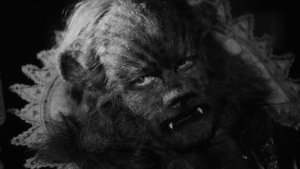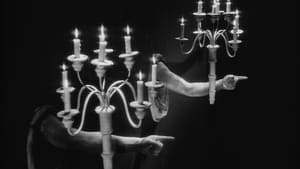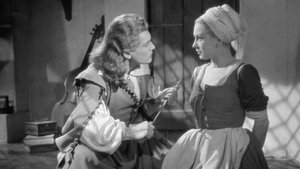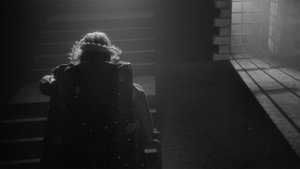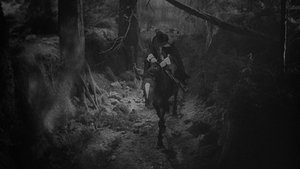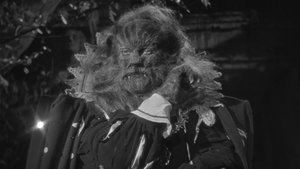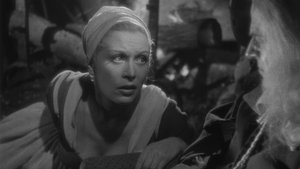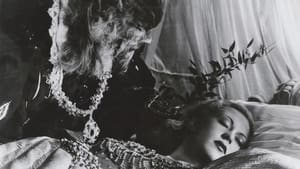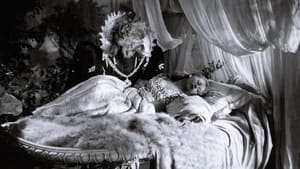Contact: [email protected]
Video Sources 0 Views
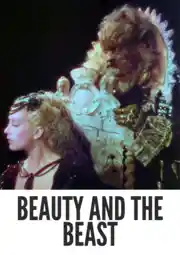
Synopsis
[ez-toc]





In the rich tapestry of classic films, there are timeless masterpieces that transcend eras, captivating audiences with their enduring charm. One such gem is Beauty and the Beast Colorized 1946, a French romantic fantasy film directed by the visionary Jean Cocteau. This article invites you to embark on a journey into the heart of this enchanting tale, exploring its legacy, the captivating blend of fantasy and romance, the visual wonderland it creates, and the enduring influence of its timeless narrative.
Read Media File Transfer Agreement: Terms and Conditions
Read FAQ
The Legacy of a French Cinematic Masterpiece
At the helm of Beauty and the Beast Colorized 1946 stands Jean Cocteau, a luminary in the world of French cinema. Cocteau’s legacy extends far beyond the film itself; his contributions to the cinematic landscape have left an indelible mark. The original title, La Belle et la Bête, first graced the silver screen in 1946, introducing audiences to a world of magic, symbolism, and poetic storytelling.
Cocteau’s directorial vision was nothing short of revolutionary. Beauty and the Beast became a canvas for his avant-garde approach, blending symbolism and surrealism to craft a narrative that transcended traditional fairy tales. The film’s beauty lay not only in its enchanting storyline but also in Cocteau’s ability to infuse it with visual poetry.
The performances of Jean Marais as the Beast and Josette Day as Belle elevated the film to iconic status. Marais brought depth to the Beast, infusing the character with a nuanced portrayal that transcended the boundaries of traditional storytelling. Day’s embodiment of Belle was equally mesmerizing, capturing the essence of the character with grace and authenticity. Together, they created a cinematic alchemy that continues to resonate with audiences.
A Captivating Blend of Fantasy and Romance
Beauty and the Beast Colorized 1946, nestled within the romantic fantasy film genre, stands as a testament to the enduring allure of tales of love and transformation. Adapted from a story dating back to 1757, the film weaves a captivating narrative that transcends time. It invites audiences to delve into an allegorical tale where love becomes a transformative force, breaking the barriers of appearance to reveal the true essence within.
The unique charm of this adaptation lies in its ability to balance fantasy and romance seamlessly. Cocteau’s direction, coupled with the stellar performances of the cast, ensures that the film retains its timeless appeal. Beauty and the Beast Colorized 1946 invites viewers into a world where magic and love intertwine, creating an experience that lingers long after the credits roll.
Journey Into a Visual Wonderland
As we journey into Beauty and the Beast Colorized 1946, the visual elements of the film emerge as a key component of its enchantment. Cocteau’s cinematography techniques, innovative set designs, and masterful use of makeup and prostheses transport viewers into a mesmerizing world of cinematic illusion.
The film’s cinematography goes beyond mere storytelling; it becomes a form of visual poetry. Cocteau’s use of light and shadow, coupled with inventive camera angles, creates a visual language that speaks to the audience’s emotions. The result is a tapestry of images that not only advance the plot but also evoke a sense of wonder and awe.
The set designs in Beauty and the Beast Colorized 1946 are a testament to the film’s dedication to craftsmanship and imagination. Each scene is meticulously crafted, immersing the audience in a fairy-tale world that blurs the lines between reality and fantasy. The attention to detail, from the grandeur of the Beast’s castle to the quaint simplicity of Belle’s village, contributes to the film’s immersive experience.
The makeup and prosthetic work in the film are equally commendable. In an era predating the advancements of modern special effects, Beauty and the Beast relied on practical techniques to transform Jean Marais into the Beast. The result is a creature that is both haunting and sympathetic, a testament to the skill of the makeup and prosthetic artists of the time.
The Melodic Spell of Georges Auric’s Score
No exploration of Beauty and the Beast Colorized 1946 would be complete without acknowledging the melodic spell woven by Georges Auric’s score. The haunting and evocative music enhances the film’s atmosphere, elevating the emotional impact of each scene.
Auric’s score serves as a narrative companion, guiding the audience through the highs and lows of the story. The delicate melodies underscore moments of romance, while the more robust compositions accompany scenes of tension and revelation. The synergy between Auric’s music and Cocteau’s visual storytelling creates a cinematic symphony that resonates with viewers on a profound level.
From Controversy to Adoration: The Journey of a Restored Classic
The reception history of Beauty and the Beast Colorized 1946 is a fascinating journey that mirrors the film’s transformative narrative. Initially met with controversy, the film faced criticism for its departure from traditional fairy-tale aesthetics. However, as time passed, Beauty and the Beast earned its rightful place as a cinematic masterpiece, cherished by audiences and critics alike.
The restoration process of the film adds another layer to its journey. Overcoming challenges, both technical and artistic, the restoration team worked diligently to bring Beauty and the Beast back to its former glory. The result is a testament to the enduring value of classic cinema and the importance of preserving these treasures for future generations.
The Enduring Influence of a Timeless Tale
Beauty and the Beast Colorized 1946’s impact extends beyond its initial release, leaving an indelible mark on subsequent adaptations of the Beauty and the Beast story. The film’s unique blend of romance, fantasy, and visual poetry served as a source of inspiration for filmmakers across generations.
Disney’s iconic animated version, released decades later, drew upon the timeless elements established by Cocteau. The enduring influence of Beauty and the Beast Colorized 1946 is evident in the way subsequent adaptations pay homage to its visual style and narrative sensibilities. The film stands as a testament to the enduring power of storytelling, proving that certain tales are truly timeless.
Preserving Cinematic History Through Colorization
The controversial practice of colorization has been a subject of debate within the film community. Some argue that it compromises the authenticity of original black-and-white films, while others see it as a means of revitalizing and introducing classics to new audiences. Beauty and the Beast Colorized 1946 finds itself at the center of this discourse, offering a unique perspective on the significance of colorizing old films.
Colorization, when executed with care and respect for the original artistic intent, can breathe new life into classic movies. In the case of Beauty and the Beast, the colorized version provides audiences with a fresh perspective, allowing them to experience the magic of Cocteau’s vision in a way that feels contemporary. The colorization process becomes a bridge between the past and present, ensuring that the film’s enchantment continues to captivate audiences of all ages.
Balancing Authenticity and Enhancement: The Art of Film Restoration
The delicate art of film restoration is a meticulous process that requires a delicate balance between preserving the authenticity of the original work and enhancing its visual quality. Beauty and the Beast Colorized 1946 serves as a case study in navigating this intricate dance between the past and present.
Restoration efforts faced challenges, from deteriorating film stock to the need for colorization expertise. However, the commitment to maintaining the film’s artistic vision remained paramount. The restoration team sought to honor Cocteau’s original intent, ensuring that the magic and beauty of Beauty and the Beast remained intact.
The importance of this delicate balance cannot be overstated. Film restoration is not merely a technical endeavor; it is a commitment to preserving the cultural heritage embedded in these cinematic treasures. Beauty and the Beast Colorized 1946, in its restored form, stands as a testament to the dedication of those who strive to keep the flame of classic cinema burning bright.
The Evolution of Special Effects: From Practical Magic to CGI Spectacle
As we reflect on the visual wonders of Beauty and the Beast Colorized 1946, it’s inevitable to consider the evolution of special effects in filmmaking. Cocteau’s innovative use of practical magic, from practical effects to makeup and prosthetics, contrasts sharply with the modern era’s reliance on computer-generated imagery (CGI).
In an age where CGI dominates the cinematic landscape, Beauty and the Beast’s practical effects serve as a reminder of the craftsmanship that defined an earlier era. The Beast’s transformation and the enchanting illusions within the film were achieved through inventive techniques that required ingenuity and artistry. It prompts us to appreciate the pioneers of special effects who relied on creativity and resourcefulness to bring fantastical worlds to life.
While CGI has ushered in a new era of visual spectacle, the practical magic of Beauty and the Beast Colorized 1946 remains a testament to the timeless appeal of hands-on craftsmanship. The film stands as a bridge between two worlds, showcasing the evolution of special effects while emphasizing the enduring charm of practical magic.
Re-experiencing a Cinematic Masterwork: Why You Should Watch Beauty and the Beast Colorized 1946
Amidst the discussion of its legacy, restoration, and visual wonders, the question arises – why should contemporary audiences seek out and appreciate the colorized version of Beauty and the Beast? The answer lies in the film’s ability to transcend time and captivate hearts across generations.
Beauty and the Beast Colorized 1946 offers a unique viewing experience that combines the magic of Cocteau’s vision with the accessibility of colorization. For those who may be hesitant to explore classic cinema, the colorized version serves as a welcoming entry point. It allows audiences to connect with the film’s emotional depth and visual splendor in a way that feels contemporary.
The film’s themes of love, transformation, and the power of storytelling resonate universally, making it a cinematic journey worth undertaking. Whether you are a seasoned cinephile or a newcomer to classic films, Beauty and the Beast Colorized 1946 beckons with its timeless allure, inviting you to rediscover the magic that has enchanted audiences for decades.
FAQs About Beauty and the Beast Colorized 1946
As we delve deeper into the enchanting world of Beauty and the Beast Colorized 1946, let’s address some common questions that may arise:
Q: How was Beauty and the Beast Colorized 1946? Exploring the Process
A: The colorization process of Beauty and the Beast involved a meticulous approach to ensure the integrity of the original film. Skilled technicians utilized advanced digital techniques to add color to the black-and-white footage, respecting Jean Cocteau’s artistic vision. The goal was not to alter but to enhance the viewing experience, breathing new life into this cinematic masterpiece.
Q: Where to watch Beauty and the Beast Colorized 1946?
A: The colorized version of Beauty and the Beast may be available through various streaming platforms or special edition releases. Check with your preferred streaming service or local theaters hosting classic film events to experience this timeless masterpiece in its revitalized form.
In Conclusion
Beauty and the Beast Colorized 1946 is more than a classic film; it is a testament to the enduring power of storytelling and the magic inherent in cinema. As we conclude our journey into the heart of this cinematic masterpiece, we invite you to experience the enchantment for yourself. Whether you choose to immerse yourself in the black-and-white original or explore the colorized version, the timeless tale of love and transformation awaits.
In an era where the cinematic landscape continues to evolve, preserving and celebrating the classics becomes paramount. Beauty and the Beast Colorized 1946 serves as a beacon, reminding us of the rich heritage embedded in the annals of film history. As audiences, let us embrace the magic of the past, present, and future, ensuring that the allure of Beauty and the Beast continues to captivate generations to come.
